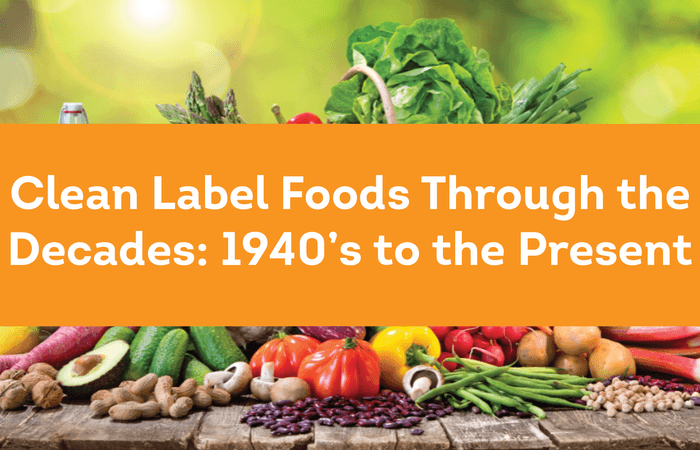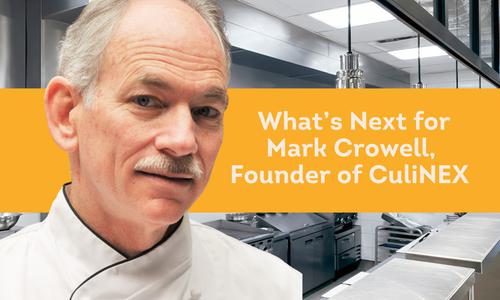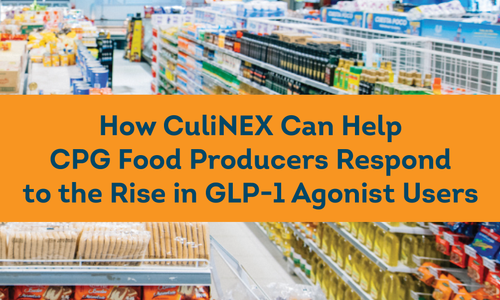
Clean Label Foods Through the Decades: 1940’s to the Present and Into the Future
Twenty years ago, Mark Crowell created CuliNEX to help the food industry develop tasty and healthy foods. Today, we’re a food innovation, development and commercialization advisory company serving many sectors of the food industry from early-stage companies to international household brands. Everything we do is based on Clean Label principles.
Of course, concern for developing delicious food without unnecessary additives, artificial ingredients, or processing did not begin when CuliNEX opened in 2005. These concepts have been around for many years. As we celebrate our 20-year anniversary, let’s take a look at the history and future of Clean Label foods.
1940’s - 1960’s: Convenience and Preservation
After World War II, food manufacturing technologies advance and homes fill their kitchens with new equipment like refrigerators, freezers, electric ovens, blenders and automatic dishwashers. This fuels a boom in processed foods. People want to spend less time cooking, so they seek out food products that are convenient, and entire meals (TV dinners) begin to be sold a single box. People don’t want to shop every day, so they appreciate products that sustain a long shelf life. Packages with long ingredient lists and unpronounceable additives appear on grocery shelves. Though the term “organic” is coined in 1940 to describe foods produced without synthetic pesticides or herbicides, it is not a word most consumers are aware of. Consumers are more concerned with terms like “convenience,” “easy” and “quick.”
1960s and 1970’s Environmental Awareness
Silent Spring is published by Rachel Carson in 1962 raises awareness of the environmental impact of pesticides, Over the next two decades, scientists and activists begin to raise concerns about the environmental impact of pollution on the environment. That leads to a growing awareness of the health impacts of the chemicals and additives in processed foods, as well. A small but culturally impactful natural foods movement begins to grow. In 1970, President Richard Nixon creates the Environmental Protection Agency (EPA).
1970’s and 1980’s Interest in Health Foods
Interest in healthy foods continues to grow in the 1970’s and 1980’s and the term “health food” joins the cultural lexicon. More and more people opt for vegan, vegetarian and other diets. Consumers seek out minimally processed options—but usually in specialized “health food stores”. Processed mass market foods with long ingredient lists are still the norm.
1990’s – 2000’s Regulated Labels
In 1990 Congress passes the National Organic Standards Act which required the USDA to develop national standards for organic products. The final rule establishing the NOP is published in 2000. “Organic” is defined and farms across the country apply for certification, allowing more consumers to be aware of, and seek out, chemical-free produce under the organic label. During the 1990s, the Food and Drug Administration (FDA) introduces new nutrition labels bringing more rigor to food terminologies like “good” or “excellent” source of…... The terms “ultra-processed” and “natural” began to pop up everywhere. Though Organic now has a specific meaning, the meaning of “natural” is never legally defined for most categories of products.
2000 – 2010’s Non-GMOs
Genetically modified foods—GMOs—move into consumer awareness in this decade. In 2007, two natural food retailers formed the Non-GMO project, creating a standardized definition for products with ingredients that are not derived from GMOs and produced without genetic engineering. A Non-GMO Project Standard is created defining provisions for product testing, traceability, and segregation. A logo is also created.
2010’s More Terms, More Health Concerns
The term Clean Label comes into widespread use around 2011. That same year CuliNEX adoptes the moniker Clean Label for our food formulations. The industry does not establish an agreed-upon definition for ultra-processed foods, but the term is in common use and ingredients considered ultra-processed carry a negative connotation. Top sustainability claims are natural, organic, non-GMO, and free-from.
During this time, consumers become aware of food additives, artificial ingredients, and the environmental impact of industrial food processing. Consumers seek vegan foods and grocery stores expand their organic produce offerings. The term Clean Label starts with
2020 - Present: Expansion and Innovation
Today, Clean Label foods have become a major trend, especially among Millennials and Gen X. Manufacturers of national food brands are looking at reformulating products without artificial ingredients and preservatives. Consumers are looking for wholesomeness and transparency. Awareness of global climate change has led to demands for more sustainable production processes. Health codes have begun to require traceability in labeling. All of these concerns became wrapped up in a single term: Clean Label.
The Future Beyond
The arc of food history points to a future with even greater demands for food transparency as new certifications and classifications like restorative agriculture become standardized. Labels with ingredient origins, manufacturing batches and shorter shelf life will become commonplace as a premium is placed on freshness. Packaged foods will contain fewer ingredients, with easy-to-understand labels. Nutrition density will become more important to consumers, particularly around protein content. Wherever the future takes us, count on CuliNEX for Clean Label food innovation, development and commercialization.








